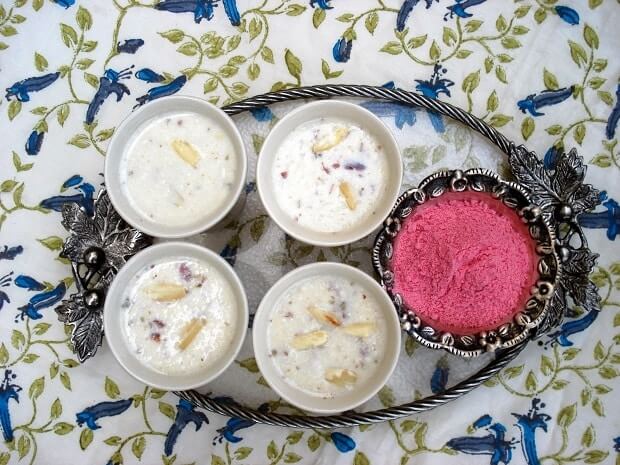DEBBIE FERNS believes the festival of colour can be even more enticing with sweet pichkaris and savoury kanji

Holi is one of India’s most resplendent festivals that owes it origins to a variety of legends that vary from state to state. Some celebrate the onset of Spring, others burn the effigy of the evil Holika with enthusiasm; however, the one common element of the festival is the joyousness and enthusiasm with which it is celebrated. People prepare for days, loading up on coloured powders of every hue, and children delight in filling water balloons with which to bombard unsuspecting passer-byes.
But on the day itself, adding to the gaiety of the sometimes riotous celebration is made possible through a few special preparations that are traditionally associated with Holi. Like thandai, a cooling drink usually made of purified water, sugar, seeds of watermelon and muskmelon, almonds, lotus stem seeds, cashew nut, cardamom, saunf (aniseed), rose-flower, white pepper and saffron. Its ingredients combine to ensure a good deal of energy for the fun to follow. For the conservative crowd, that is!
But the more popular version, undoubtedly so, is when bhang is added to this concoction. A mere spoonful of bhang mixed with milk, ice and cream and added to thandai can create a delightful air of extrovertism.
Holi is synonymous with bhang, an essential and accepted part of the celebrations. The buds and leaves of the cannabis plant are squashed and ground to a paste to create bhang, and when added to the thandai, it transforms into a potent, yet nutritious and refreshing drink. Bhang can also be used in the preparation of certain sweets like halwa or added to savoury pakoras or vadas. Bhang is traditionally associated with Lord Shiva, who has been awarded the honour of discovering the intoxicating properties of the plant.
Because it is illegal to use, possess, grow or sell cannabis in Australia, people celebrating Holi here will have to enjoy the rather sanitised version of thandai. But let that not dampen your celebrations. And while you’re at it, to get into the true mood of the festival, here are a couple of recipes to help you hit that Holi high!
Kesar aur aam ki pichkari
2 very ripe mangos
10 strands saffron
300gm ricotta cheese
2 leaves of gelatine
100ml cream
Pinch of salt
65g confectioner’s sugar
10 store-bought cannoli shells
Pistachio nuts, mango puree, strawberry puree for the garnish.
Cut the mango in small cubes and set aside. Soak the saffron in warm cream and keep aside. Add soaked gelatine leaves in warm cream. Mix the ricotta cheese, salt and confectioner’s sugar together, and fold in the mango cubes and saffron cream. Let it set for 2 hours in refrigerator.
Fill the cannoli shells with the mango mixture.
To present, drizzle with some pureed fresh mango, strawberry and garnish with pistachio.
Carrot kanji
650gm black carrots, peeled (use regular carrots if you cannot find black carrots)
2 medium beets, peeled
2ltr water
100g brown mustard seeds, coarsely ground
Sprigs of mint (optional)
Cut the carrots and beets into thin sticks and blanch in hot water for 2 minutes. Let them cool in the same water.
Add ground mustard seeds and salt to taste. Leave in the sun for 3-4 days, until the ground mustard seeds rise to the top and the colour of the liquid turns bright red from its original dark mauve.
For a dash of colour and flavour, add a sprig of mint.
Both recipes courtesy of Andy Chauhan, Sip & Bite Café in Canterbury.






